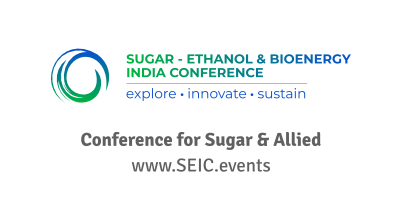Researchers have developed a novel, cost-effective, metal-free porous organic catalyst for efficient H2 production by harvesting mechanical energy.
In order to reduce the global warming and related impact of fossil fuels, transition towards sustainable alternatives based on renewable energy becomes increasingly critical. Green hydrogen (H₂) fuel has emerged as a game-changing renewable and clean-burning energy source, which generates no direct carbon emissions and only water as a by-product when used in fuel cells. Recognizing the critical role of green H2 in sustainable energy, the Government of India launched the National Green Hydrogen Mission to drive large-scale production, promote research and innovation, and position the country as a global leader in H2 economy.
Among the environmentally benign methods of H2 production, overall water splitting stands out as an effective and scalable technique that relies on a catalytic strategy since the reaction is energetically uphill. Piezocatalysis has emerged as a promising catalytic technology which harvests mechanical perturbations with a piezoelectric material to generate charge carriers that are utilized to catalyze water splitting.
In recent groundbreaking research work, Professor Tapas K. Maji from Chemistry and Physics of Materials Unit at Jawaharlal Nehru Centre for Advanced Scientific Research (JNCASR) Bengaluru (an autonomous institution under the Department of Science & Technology, Govt. of India) and his research team have developed a metal-free donor-acceptor based covalent-organic framework (COF) for piezocatalytic water splitting. This study published in Advanced Functional Materials demonstrates a Covalent organic framework (COF) built from imide linkages between organic donor molecule tris(4-aminophenyl)amine (TAPA) and acceptor molecule pyromellitic dianhydride (PDA) acceptor exhibiting unique ferrielectric (FiE) ordering, which showed efficient piezocatalytic activity for water splitting to produce H2.
This discovery breaks the traditional notion of solely employing heavy or transition metal-based ferroelectric (FE) materials as piezocatalysts for catalyzing water splitting reaction. Conventional FE materials have limited charges confined at the surface only which usually lead to quick saturation of their piezocatalytic activity. In contrast, FiE ordering in a COF provides a multifold enhanced number of charges at the pore surfaces owing to the large local electric fields. The sponge-like porous structure of a COF allows the diffusion of water molecules to efficiently access and utilize these charge carriers for catalysis, giving ultra-high H2 production yields and outperforming all oxide-based inorganic piezocatalysts.
Using a simple donor molecule like TAPA and an acceptor molecule like PDA, Prof. Maji and his research team have built a COF system that has strong charge transfer properties, which creates dipoles (separation between positive and negative charges).
The TAPA units have a unique propeller-like shape, where their benzene rings twist and tilt to break the flat symmetry of the structure, helping it reach a more stable, lower-energy state. Prof. Umesh V. Waghmare and his team from JNCASR, who are collaborators of the study, showed using theoretical analyses that this COF has an unusual electronic structure with energy bands that couple and resonate with each other by dipolar ordering. This causes instability in the lattice structure, leading to FiE ordering. These FiE dipoles interact with flexible twisting molecular motion in the material, making them responsive to mechanical pressure. As a result, the material can generate electron-hole pairs when mechanically stimulated, making it a highly efficient piezocatalyst for water splitting for H2 production. The team comprises four other researchers from JNCASR: Ms. Adrija Ghosh, Ms. Surabhi Menon, Dr. Sandip Biswas and Dr. Anupam Dey.
Apart from JNCASR, Dr. Supriya Sahoo and Prof. Ramamoorthy Boomishankar from Indian Institute of Science Education and Research, Pune and Prof. Jan K. Zaręba from Wrocław University of Science and Technology, Poland made important contributions to the present interdisciplinary study.
The utilization of a cost-effective, metal-free system with a high production rate of H2 by harvesting mechanical energy opens up a new route to green H2 based on porous heterogeneous catalysts.














